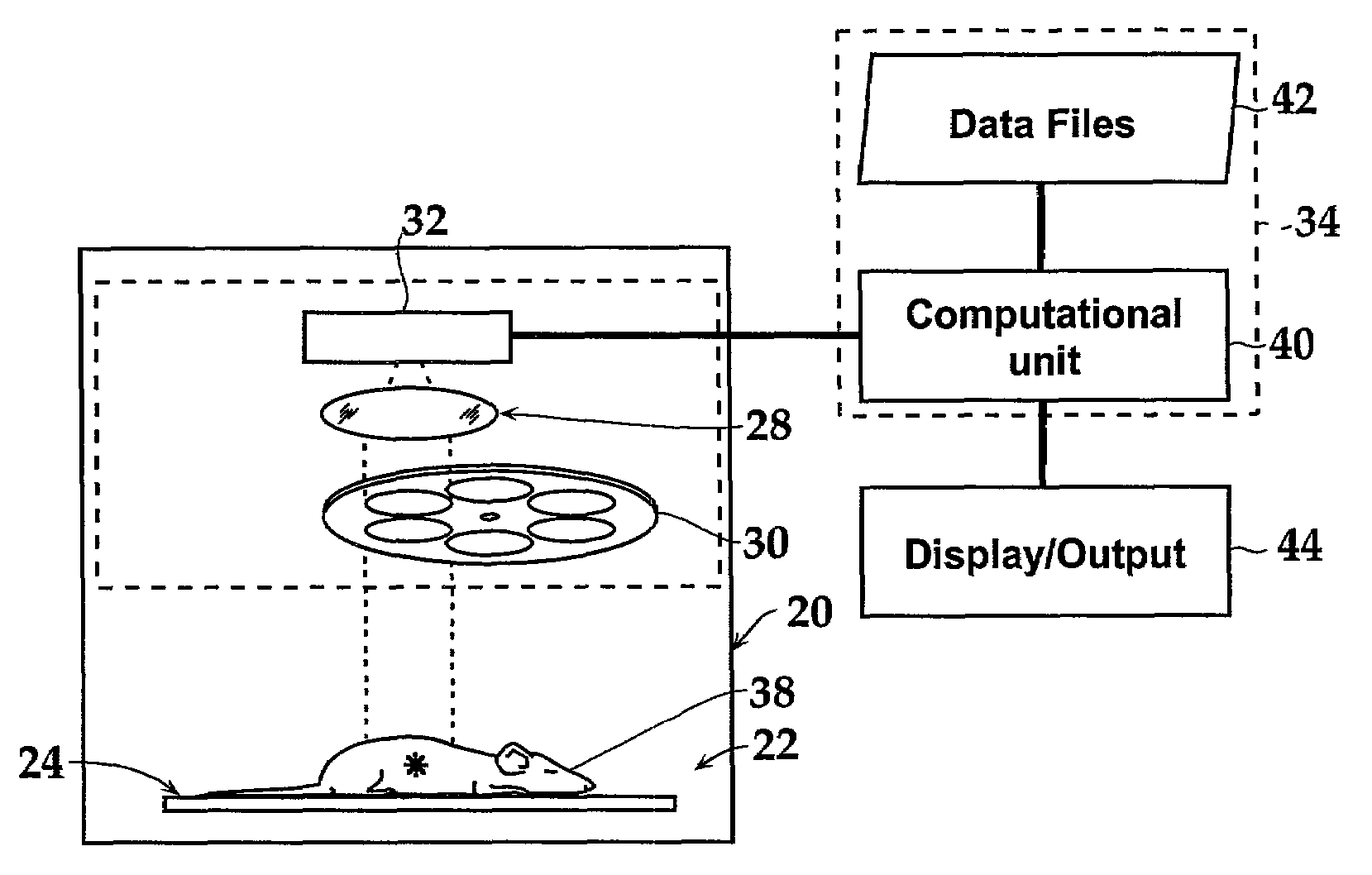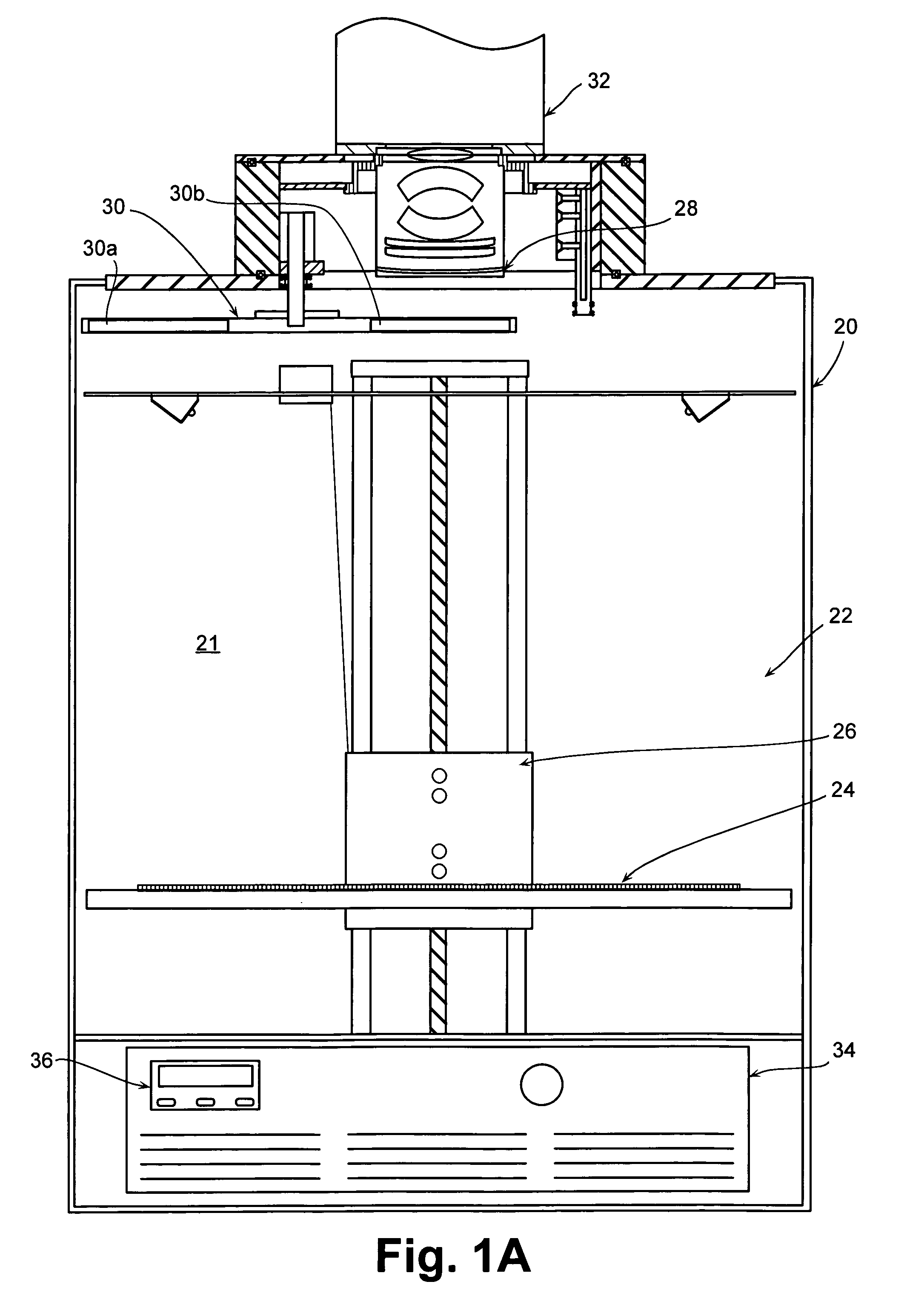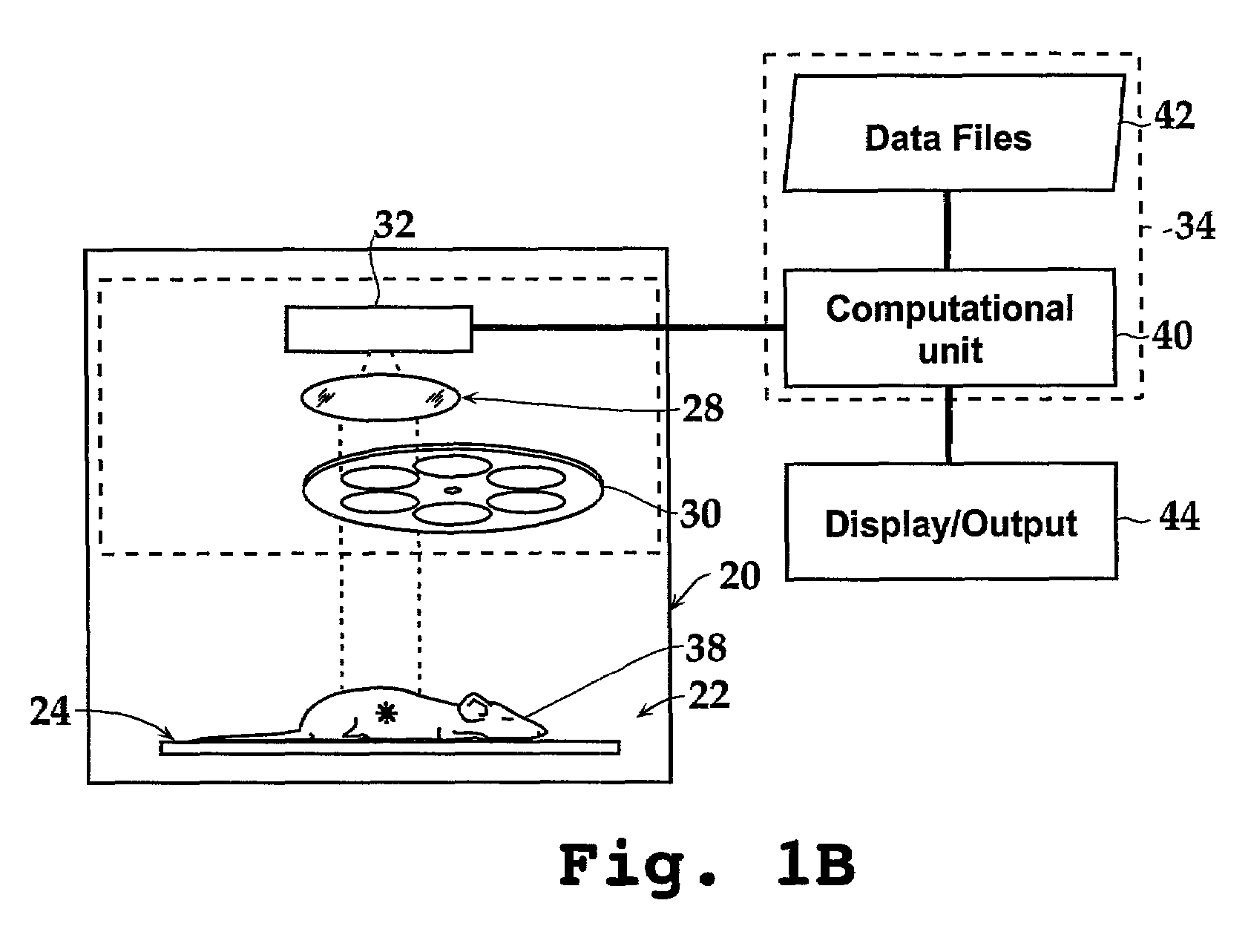Method and apparatus for determining target depth, brightness and size within a body region
a technology of target depth and brightness, applied in the field of apparatus and methods, can solve the problems of limited use of x-rays, expensive and bulky equipment such as magnetic resonance imaging (mri), or ultra-sound, and inability to readily image the expression of gene products in vivo and determine the effect of gene expression
- Summary
- Abstract
- Description
- Claims
- Application Information
AI Technical Summary
Benefits of technology
Problems solved by technology
Method used
Image
Examples
example 1
Calculating Depth of a Light-emitting Object Using Two-wavelength Spectral Images
[0136]The spectral information shown in FIG. 13A was used to calculate the depth of luciferase-labeled cells in an animal that received a sub-cutaneous injection of the cells (FIG. 13B) and an animal having labeled cells in its lungs (FIG. 13C). The analysis was performed using data at wavelengths equal to 600 nm and 640 nm using the following steps: (i) the bioluminescent cells were imaged in vitro as well as in vivo at 600 nm and 640 nm; (ii) the images were quantified by measuring the average intensity for each image; (iii) the ratio of the in vivo image data to the in vitro image data were determined at each wavelength; and (iv) the depth was calculated using Equation 7 and an average effective scattering coefficient μeff estimated from the absorption and scattering coefficients in FIG. 7.
[0137]For the subcutaneous cells, the ratios of in vivo to in vitro intensities (relative intensities, or φ) are...
PUM
| Property | Measurement | Unit |
|---|---|---|
| wavelengths | aaaaa | aaaaa |
| wavelengths | aaaaa | aaaaa |
| wavelength | aaaaa | aaaaa |
Abstract
Description
Claims
Application Information
 Login to View More
Login to View More - R&D
- Intellectual Property
- Life Sciences
- Materials
- Tech Scout
- Unparalleled Data Quality
- Higher Quality Content
- 60% Fewer Hallucinations
Browse by: Latest US Patents, China's latest patents, Technical Efficacy Thesaurus, Application Domain, Technology Topic, Popular Technical Reports.
© 2025 PatSnap. All rights reserved.Legal|Privacy policy|Modern Slavery Act Transparency Statement|Sitemap|About US| Contact US: help@patsnap.com



